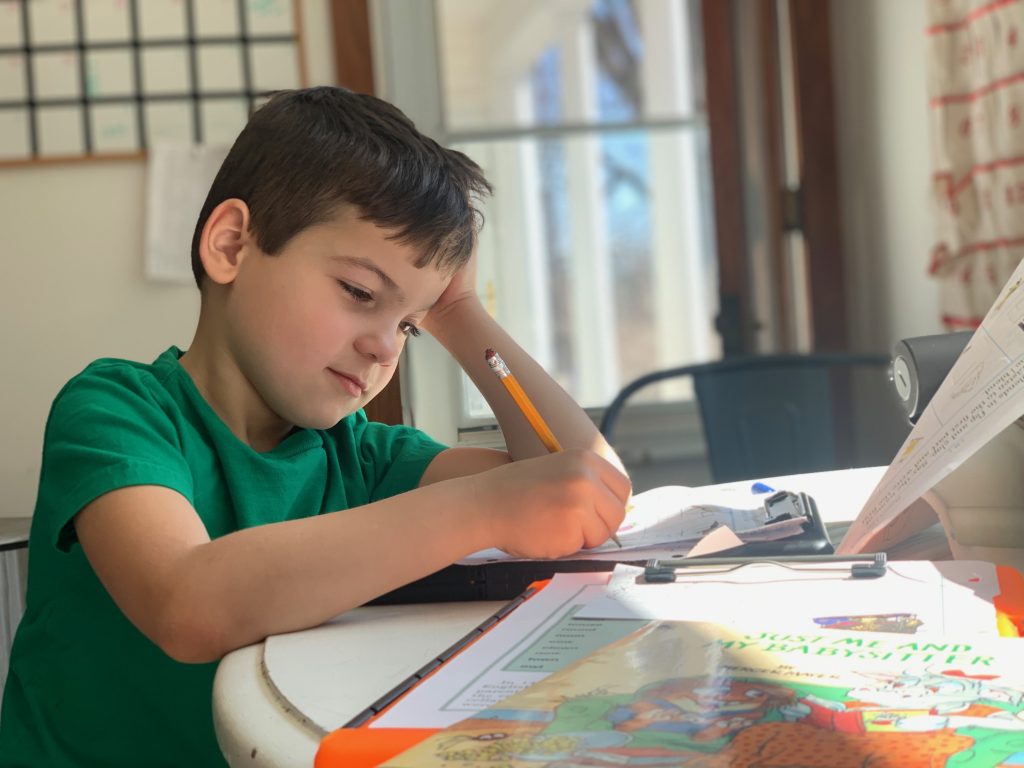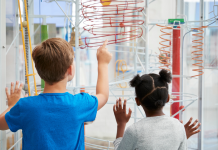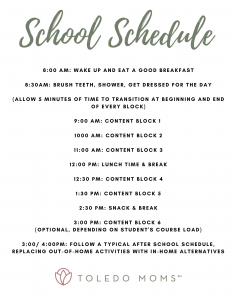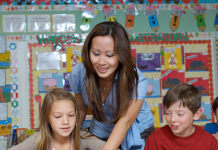I have been a high school science classroom teacher for 13 years. I have witnessed many events that have caused disruption in learning, either when I was a student myself or in my years in the classroom. The Anthrax scare. 9-11. H1N1 (Swine Flu). Snowmaggedon. Not to mention local catastrophes like tornados, calamity days, flooding, and the like. And, most recently, COVID-19.
 With the announcement from Governor DeWine that all K-12 schools in Ohio will be closed until at least April 3, 2020, many parents are scrambling for information on what this means for their students’ learning, among other things. This is a very fluid situation and it is possible that the school closures may extend beyond this initial date. As the school year is only 180 days long, to begin with, this closure represents a significant portion of the school year (over 5%, assuming your child would have gotten a week off for spring break anyway).
With the announcement from Governor DeWine that all K-12 schools in Ohio will be closed until at least April 3, 2020, many parents are scrambling for information on what this means for their students’ learning, among other things. This is a very fluid situation and it is possible that the school closures may extend beyond this initial date. As the school year is only 180 days long, to begin with, this closure represents a significant portion of the school year (over 5%, assuming your child would have gotten a week off for spring break anyway).
Below are some of my teacher tips for establishing a classroom environment at home to keep kids on track during the school closures, to keep our kids’ minds engaged and learning! (Please note that each district is handling the closures differently, so always seek information directly from your child’s school).
Gather Learning Materials
Students have been advised to bring all of their materials needed for learning home with them. This includes any textbooks, workbooks, learning packets, and devices (such as a school-issued Chromebook). It seems most learning will occur online, but there should be paper copies available for students that do not have consistent access to the internet. Some elementary-aged children have been allowed to take library books home during the mandated extended break to help keep them occupied. Many online content providers are making their digital resources available FOR FREE for the next 30 days. See the comprehensive list here to supplement what you’ve already got for your student.
Set Up a Work Space
Set up a dedicated place to work on academics. I would suggest having the workspace somewhere that is visible but not in a place where they will be highly distracted (such as in the family room, in front of the TV). Desks in your kids’ rooms or the dining room or kitchen table make very suitable workspaces. Having water and quick snacks, like granola bars, nearby will keep their bodies and brains fueled for learning. If your student is expected to learn online, this workspace should include access to internet and be near an outlet to keep their device charged.
If internet is unavailable at home, it is suggested driving to a local library or similar and parking near the building to access the WiFi without entering the building. Also, check with neighbors to see if they would allow you temporary access to their WiFi during this time. Finally, many schools offer paper options for assignments in lieu of digital assignments. Consult with your child’s school for specific guidance in your district.
Establish a Routine
All students from elementary-aged to high school thrive on a routine, whether they like to admit that or not. Setting a schedule for daily activities, both academic and non-academic, will be so helpful in minimizing the disruption caused by the sudden closure. I recommend waking your student up around the same time they would normally for a school day and carving out chunks of the day for various subject work, meals, and play.
Here is a sample schedule:
Download Schedule Here
- 8:00 AM: Wake up and eat a good breakfast
- 8:30AM: Brush teeth, shower, get dressed for the day
- 9:00 AM: Content Block 1 (allow 5 minutes of time to transition at beginning and end of every block)
- 10:00 AM: Content Block 2
- 11:00 AM: Content Block 3
- 12:00 PM: Lunch time & break
- 12:30 PM: Content Block 4
- 1:30 PM: Content Block 5
- 2:30 PM: Snack & break
- 3:00 PM: Content Block 6 (optional, depending on student’s course load)
- 3:00 or 4:00 PM: Follow a typical after school schedule, replacing out-of-home activities with in-home alternatives (see this post for suggested activities)
For the content blocks, these would be the subjects/courses your student is currently taking. If they normally have language arts in the morning, for example, I would suggest working on language arts during Content Block 1. You may also need to provide shorter breaks between blocks for younger children. Try to keep their schedules similar in time and sequence to what they would be during the school day.
Classroom Management At Home
- Take away cell phones and smartwatches during your student’s dedicated work time.
- Periodically check in on them to ensure they are on track.
- Ask to see their computer screens and be sure they don’t have distracting pages open on their browsers.
- Check for understanding of content by asking your student to explain to you what they are learning about. This is a great way to check for understanding without requiring content expertise, and it helps the students learn the content more effectively to teach it back to you!
- If possible, create a warm up activity for each subject/class to get their brains ready for learning. Warm ups could include an open-ended question, a short vocabulary quiz, or a brief review of the content they learned the day before.
- Utilize any resources your child’s teacher(s) have available. Teachers will likely be available for help through video conferencing, virtual office hours, or email.
- Much content, especially at middle and high school levels, is available through a learning platform like Google Classroom. If you don’t already have parental/guardian access to your child’s Google Classroom pages, request it from the teacher.
- See supplementary digital resources available for free, linked above.
- Minimize unscheduled breaks, when possible.
- Allow for physical movement during Content Blocks, particularly if your student needs to fidget. Rolling office chairs, bouncy yoga balls, playing with silly putty, and even just getting up to get a drink of water are helpful to release pent up energy and refocus the mind.
Do you have any additional information to add? Comment below!












